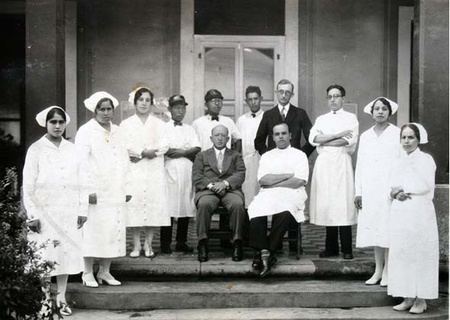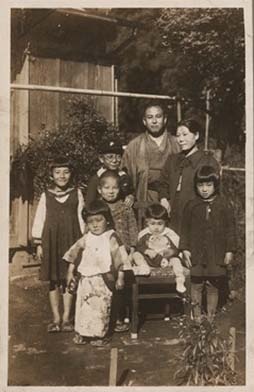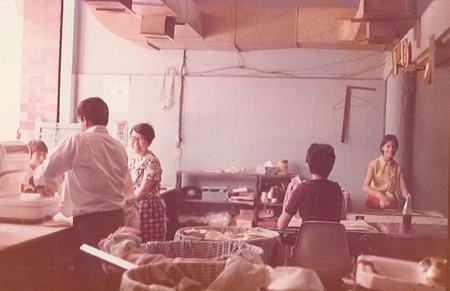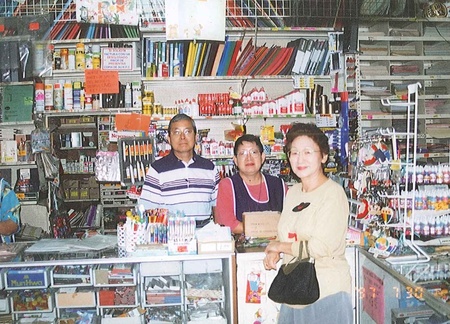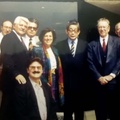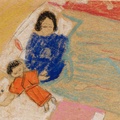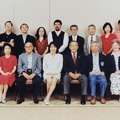Concepción Michie Hiramuro and Francisco Yoshitaka Akachi married in the city of Guadalajara in 1963. Their lives were not only intertwined by the fact that they formed a family; Their lives took parallel paths when they were born in Mexico as children of Japanese immigrants and because their childhood was spent in Japan during the difficult years of the war and the no less terrible ones that followed after Japan's defeat in the year of 1945.
Michie witnessed the dropping of the atomic bomb while living with his brothers and mother in the city of Hiroshima. Yoshitaka, along with his parents and brothers, witnessed the terrible napalm bombings that almost completely destroyed the city of Tokyo, a situation that led him to be transferred to a small town in Nagano Prefecture.
In Mexico, Concepción and Francisco were part of the children of Japanese immigrants who had a fortunate childhood, enjoying an economically well-off position. His parents, with the income they earned, managed to realize the dream that most emigrants had when they arrived in America: Return to their country rich.
The path that Toraichi Hiramuro and Kuninosuke Akachi—parents of Concepción and Francisco respectively—had to travel to enjoy a privileged economic position was not easy, much less comfortable. Both young people were part of the hundreds of thousands of emigrants who moved from Japan to America to look for work. Hiramuro, originally from the Hiroshima prefecture, at the age of 16 became involved with a Japanese company that recruited young people to work in a sugar mill in Peru in 1907. Akachi, when he was 19 years old, arrived in Mexico in the year 1918 to work on a ranch in the state of Sonora, owned by a countryman who lived in the United States.
Hiramuro, faced with the difficult working conditions in the South American country, moved to Mexico in 1912. By boat he arrived at the port of Guaymas, Sonora, where he joined the North American railroad company, Southern Pacific. In the midst of the revolution in Mexico, this company needed a large number of workers to build the trunk lines that, over the years, would join the city of Guadalajara with the United States. The North American company, to serve its staff, also had a series of clinics and small hospitals. Hiramuro rose through the ranks of the company from being a gardener at the hospital in Empalme, Sonora, to being in charge of the X-ray department at the large hospital that would build the company in the city of Guadalajara.
At the end of the 1920s, Hiramuro received a high salary that was paid in dollars, an income that allowed him to save and be one of the few emigrants who had enough resources to travel to Japan and look for a wife in his hometown. His first daughter was born in 1931 in the city of Guadalajara, later his son Fernando would be born and, in 1939, his second daughter, Concepción. With the savings they had managed to accumulate over all these years, the Hiramuro family decided to return to Japan permanently. In 1940, Toraichi himself accompanied his wife to the city of Hiroshima. Once the family settled, Toraichi returned to Guadalajara with the purpose of resigning and selling the assets they had in Mexico, an objective that he could no longer achieve when the war broke out in December 1941.
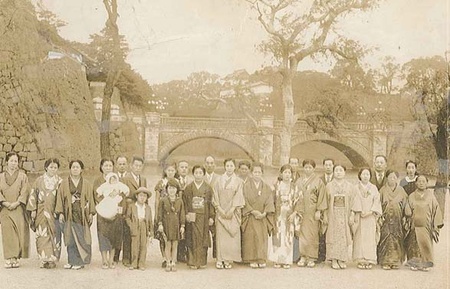
Kuninosuke Akachi also managed to raise some capital after working on the ranch and opening a nixtamal mill in the port of Huatabampo, Sonora. Later, he opened another mill in the city of Mochis, Sinaloa. In 1927, he moved to the town where he was born to get married and return to Mexico. The mill was so prosperous that Kuninosuke invited his younger brother, Arata, to work to help him.
As the Akachi family had decided to return to Japan, the purpose was to transfer the business to their brother, an event that happened in 1937. By then, the Akachi had six children and were expecting another. Francisco was born in 1934, being the fourth child in the family.
Life for little Concepción and Francisco in Japan was not easy. Although their families had sufficient economic resources, the situation of the entire Japanese population—even before the war against the United States began—was full of sacrifices due to rationing of food and other types of products. When the Pacific War broke out and as it progressed, the Japanese people, although they were not directly on the battle front, were the ones who sustained the war every day with greater hardships and shortages.
When the war against the United States began, the Hiramuro family no longer had contact or financial support from Toraichi as all types of relations between Mexico and Japan were broken. Michie's mother took care of the three little ones with her own efforts, but the worst for the Hiramuros was yet to come. On August 6, 1945, the first atomic bomb was dropped on the city of Hiroshima, and although fortunately they did not die, the house was seriously affected. The months and years to come meant for the Japanese people a period of enormous deprivation and even famine, but for the inhabitants of Hiroshima and Nagasaki, the horror left by the atomic bombs and their subsequent effects forever marked those who witnessed it. and to their future generations. Toraichi Hiramuro was able to send his family from Mexico, starting the year after the end of the war, material aid with which, combined with his mother's sewing work, they managed to survive.
The North American occupation forces authorized the departure of the Hiramuro in 1950. Concepción remembers very well the transfer that took them to the port of San Francisco because on the ship there was food that could not be consumed in Japan, in addition to the abundance of the same. Toraichi was waiting for them and together they traveled on the Southern Pacific railroad to the city of Guadalajara.
Faced with the devastation that Japan was left with, the Akachi decided that their eldest son, Jesús, and Francisco would move to Mexico since the economic conditions did not exist to support such a large family. But also, his parents considered that Jesus should move to a climate that was not so cold because he had been infected with tuberculosis, a disease that affected a large number of the population of Japan in the first years after the war.
Francisco and his brother, as Mexican citizens, were able to leave Japan until 1952 to live with their uncle Arata. In Mexico City, the uncle had a prosperous stationery store in the Tacuba neighborhood that he had opened when he was forced to move when the war broke out, as part of the Mexican government's decision to concentrate all the Japanese living in this city in this city. province. Fortunately, Arata had managed to preserve the nixtamal mill in the city of Los Mochis, so when Francisco arrived in Mexico, he would be in charge of taking care of that business.
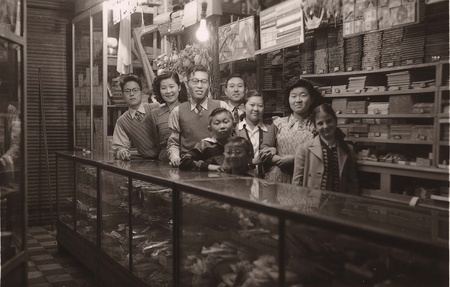
In 1963, Michie and Francisco married. Back then, they didn't really know each other; The marriage was arranged the way it was done in Japan, through an intermediary or nakodo, who was in charge of introducing the bride and groom. Mr. Ernesto Nakashima—an emigrant who lived in Guadalajara and who knew both young people—was in charge of connecting the couple. Francisco traveled to the city of Guadalajara where he met Concepción and together they decided to get married.
That year the place moved to the city of Los Mochis to run the mill and the tortilla factory together, an activity they would carry out daily for 17 years. The work in the mill was very intense, not only was the corn ground but tortillas were made; The place was located very close to the central market of the city so the activities really began in the early morning. At 4 in the morning, tortillas began to be made and sold to the general public as well as to restaurants and taquerias that required larger quantities. The activities of the mill concluded until 6 in the afternoon.
In 1980, Francisco and Concepción, who already had a daughter, decided to move to the city of Guadalajara to open a stationery store. The advice of Francisco's brother, who was in charge of the stationery store in Mexico City, encouraged them to acquire this type of business. The stationery store would be called Mony and was established in the Libertad sector, in the Providencia neighborhood. Since that year, thanks to the attention and care that Francisco and Concepción maintained with their clientele, it has been able to maintain itself for 37 years.
Francisco Akachi died in 2015. Michie continues to run the business with the help of his daughter and son-in-law. The Mony stationery store represents a mole of Japanese culture in a neighborhood of Guadalajara, but also the service that this type of business provides to the community has been recognized by the inhabitants of this neighborhood. The integration of emigrants and their children into the life of the neighborhoods also allows us to weave a harmonious social fabric that is unfortunately being lost.
© 2018 Sergio Hernández Galindo


